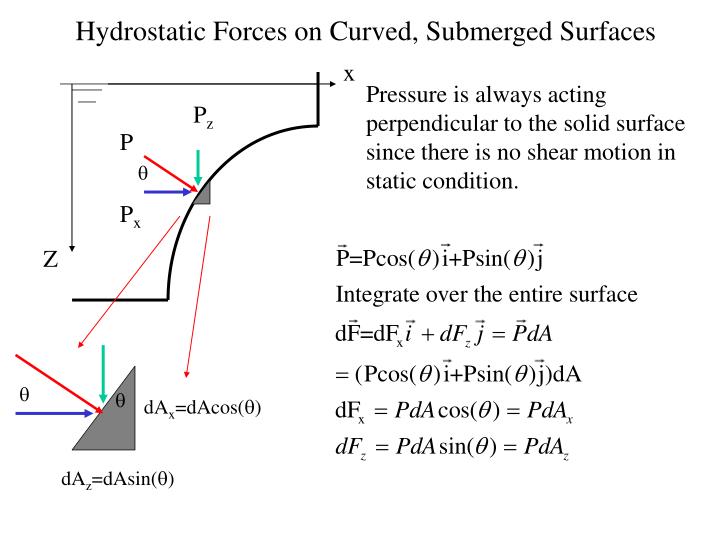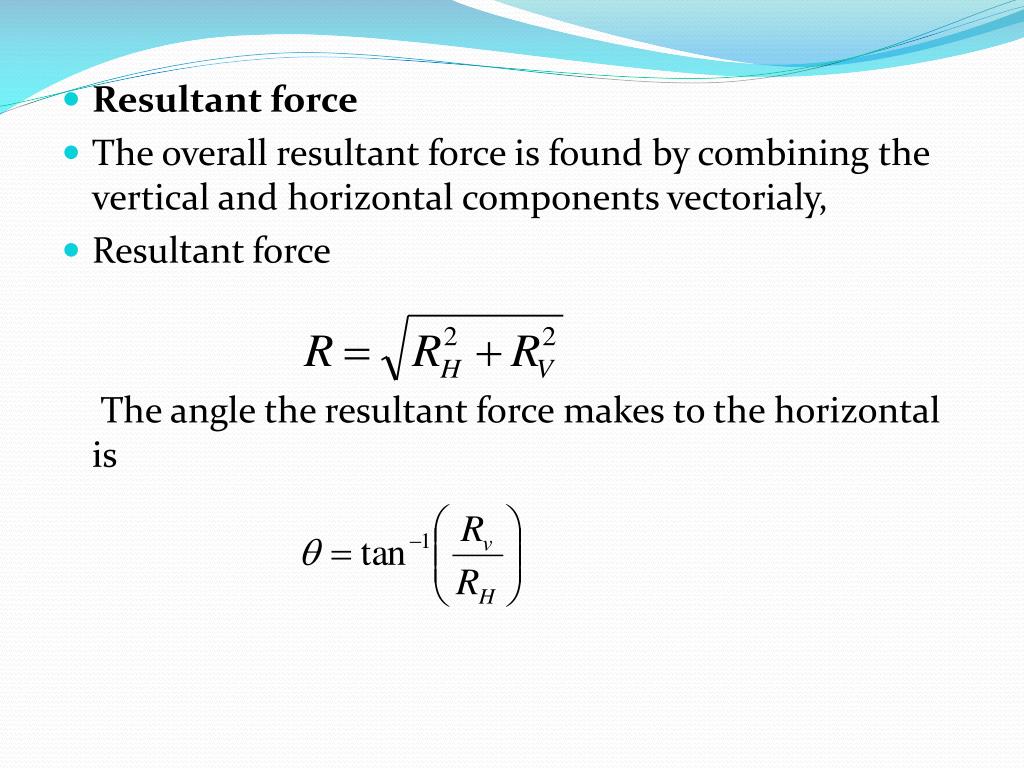
Now consider another curved surface AB, as shown in the figure. Again, it is easiest to keep the horizontal and vertical components separate in all calculations.


The direction of the resultant force is givenįor non-circular shapes, the resultant angle is not used and the horizontal and vertical gravity center may not align with the actual surface. Since all points on a circle have a normal passing through the center of a circle, the resultant force F R has to pass through point E. The magnitude of the resultant force is then determined byīy inspection, it is noted that pressure forces are always perpendicular to the surface AB (i.e., the normal stresses). If the gravitational acceleration is assumed to be constant and the fluid is incompressible, then the center of gravity is the same as the centroid of the fluid volume. This force, F Ry ,passes through the center of gravity of volume ABCD. Another example will be given later to illustrate an imaginary volume. In this case, the volume is real since the liquid actually occupies this volume. Note that this volume can be either real or imaginary. The y-component of the resultant force F Ry is the weight of the liquid directly above the curved surface (i.e., volume ABCD). This force F Rx passes through theĬenter of pressure for the projected area AE. The normal force acting on the vertical projection of the curved surface


The x-component of the resultant force F Rx is Fluids eBook: Hydrostatic Force -Curved Surfaceīased on the methods developed for determining forces on a submerged plane surface in the previous section, forces exerted on a curved surface can be easily determined as given in this section.įor a curved surface AB, as shown in the figure, the magnitude and the line of action of the resultant force F R exerted on the surface can be best derived by splitting the force into its horizontal and vertical components.


 0 kommentar(er)
0 kommentar(er)
